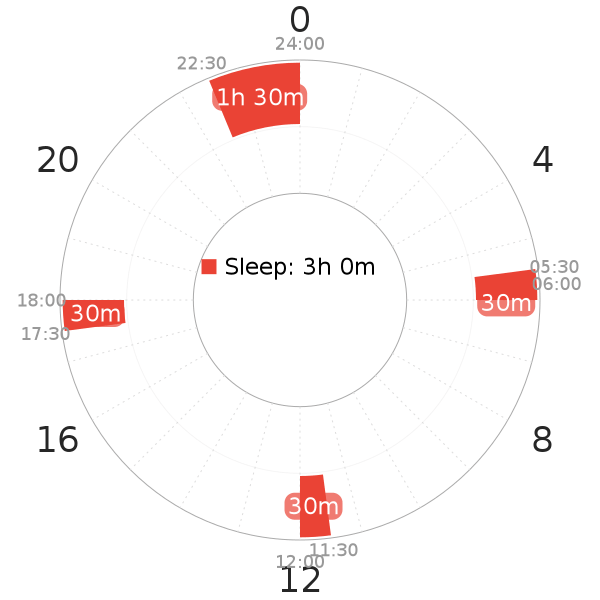
Trimaxion is a polyphasic schedule that combines elements of Everyman and Dymaxion families. Trimaxion, or Trimax, is a polyphasic pattern of the “-maxion” family. It is the third scheduling sequence from the original Dymaxion sleep, with a total of 3h sleep each day.
Content
History
There is a total of 3 Dymaxion naps in Trimaxion (3 naps = “tri”). Trimaxion’s creation is a final transition step before Dymaxion. Starting with Bimaxion with 2 core sleeps, Trimaxion now replaces the dawn core of Bimaxion with a mere 30m nap; there is now only one core sleep remaining. As a result, Trimaxion gives a chilling total sleep of only 3 hours each day.
Overall, it is still less popular than Bimaxion, and much less popular than Dymaxion.
Mechanism
Trimaxion is a transitional schedule for a gradual adaptation route to Dymaxion, as well as a fallback schedule after Dymaxion becomes no longer sustainable.
- Trimaxion resembles a shortened Everyman 3, with the core sleep only lasting for 1 full cycle (90 m). It is classified as an extreme Everyman schedule because of the multiple naps.
- The structure deeply resembles Dymaxion-style, with each sleep block looking somewhat equidistant from one another. By the standard, there is a sleep block around midnight, sunrise hours, noon and mid/late afternoon.
- As with the case of Bimaxion, which is an “E3-tier” compared to Uberman, Trimaxion is equivalent to “E4-tier” compared to Dymaxion.
- There is only one core sleep to support SWS around midnight hours and the glymphatic system at the bare minimum.
- The core will cover as much as SWS as possible, being in SWS peak.
- The naps provide REM sleep. SWS can be present in the third nap, however.
As an average human needs approximately 90m of REM and SWS each for optimal body and mind functions each day, the total sleep of Trimaxion is not sufficient to account for these basic sleep requirements.
Adaptation
Trimaxion’s distribution of sleep would take individuals with reduced SWS/REM requirements (or both) to be able to adapt to and sustain long-term. SWS and REM pressure will climb over a long period of days rather than being alleviated because of the limited total sleep.
Attempting to sustain this schedule will cause chronic sleep deprivation in average humans. Thus, polyphasic beginners and average sleepers should completely avoid this schedule.
Cold turkey
Because there has never been any official success on this schedule, the cold turkey approach is a potential solution. As with many sleep mutants in the community who have adapted to multiple reducing polyphasic schedules, it may be more beneficial to start this schedule right away and attempt to hold on to it.
Gradual adaptation
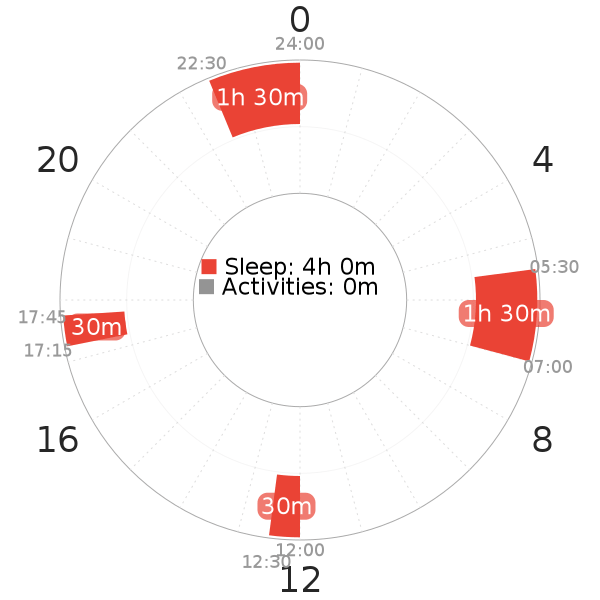
Bimaxion can be the first step to get used to the 30m naps. Then, the transition begins with replacing the dawn core with a 30m nap. However, given that Bimaxion is already tough for adaptation, this route likely isn’t efficient. Alternatively, one can attempt an adaptation to E3 with 30m naps first.
Difficulty
| Difficulty tier | |
| Trimaxion | E4 |
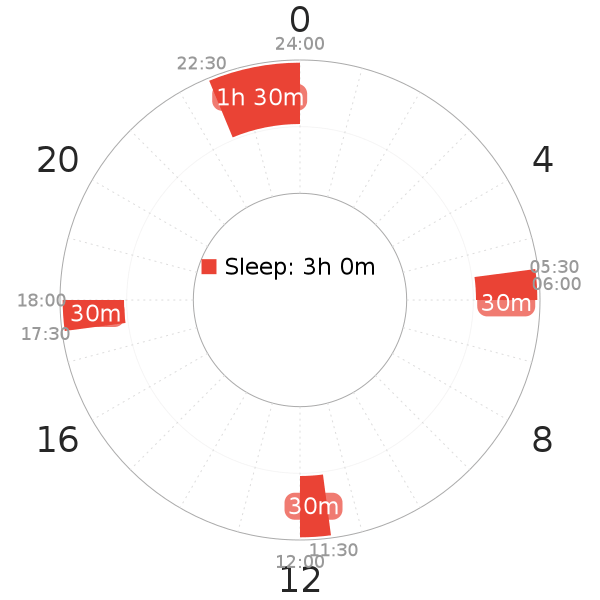 | 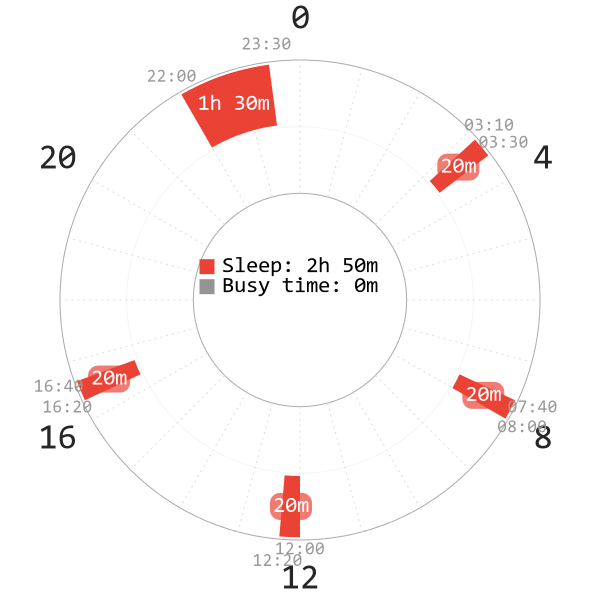 |
| https://napchart.com/czqxg | https://napchart.com/9ue77 |
Trimaxion is approximately as difficult as the likes of E4, or possibly far more challenging. Compared to its predecessor step, Bimaxion, the loss of a dawn sleep block steeply boosts the insane adaptation. Both of these schedules are the closest step to their nap-only counterparts (Dymaxion and Uberman respectively).
Trimaxion is absolutely far more intense than Bimaxion; so far, it is the only schedule in the Dymaxion family without any reported adaptation success. There have been some attempts, but all ended in failure. While possibly suitable for mutants, Trimaxion’s true level of difficulty and certain mechanisms remain at a hypothetical stage.
The most challenging aspect of Trimaxion adaptation is the perpetual SWS wakes near the end of the naps, and possibly the core too. In order for the repartitioning process to complete, both the nap(s) and the core will have to obtain enough SWS so that SWS pressure can subside to a healthy level. REM sleep’s competition will also make it problematic to balance with SWS gain. The graveyard hours promise to be hellish; productivity level during wake time can be severely crippled with an everlasting Stage 3.
Alternate Variants
Alternatively, adding 1 or 2 more 30m naps may facilitate the intense sleep pressure as adaptation progresses; however, it will only delay Stage 3 for some time. Stage 3 will return once these “buffer” naps are removed from the schedule. The attempter will still have to face the mountains of sleep inertia from each sleep block to reach the end of the adaptation.
Regardless of the shenanigans, all attempters have to avoid any oversleeping duration longer than ~15-30m to have a chance to adapt.
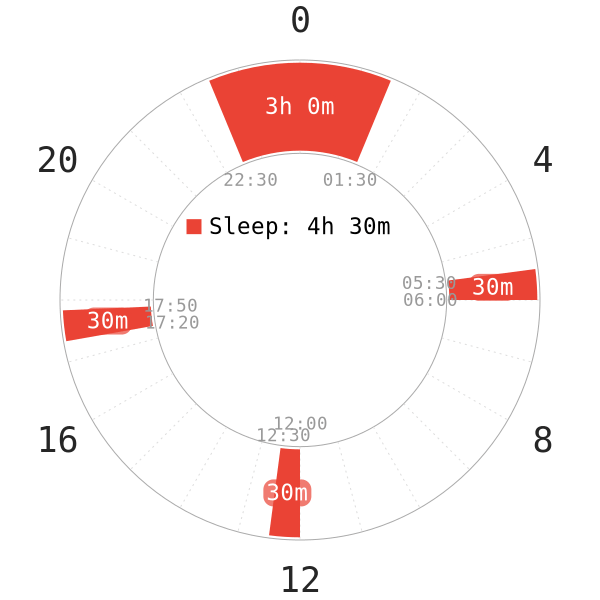
Since there is not a single successful adaptation to this schedule, an extended variant (3h core and 3 30 m naps) is likely a lot milder; nonetheless, it would then become redundant. A standard E3 would be a more sensible option, even though the 3h core variant of E3 has accumulated a ton of adaptation failures over the years.
Thus, Trimaxion-extended with 30 m naps is only more complicated and puzzling. It is crucial to observe a successful case to this schedule before any further theoretical alternate versions of this schedule become available.
Lifestyle Considerations
Based on the structure of the schedule, Trimaxion would share the same lifestyle as Bimaxion. It actually has some advantages compared to E4.
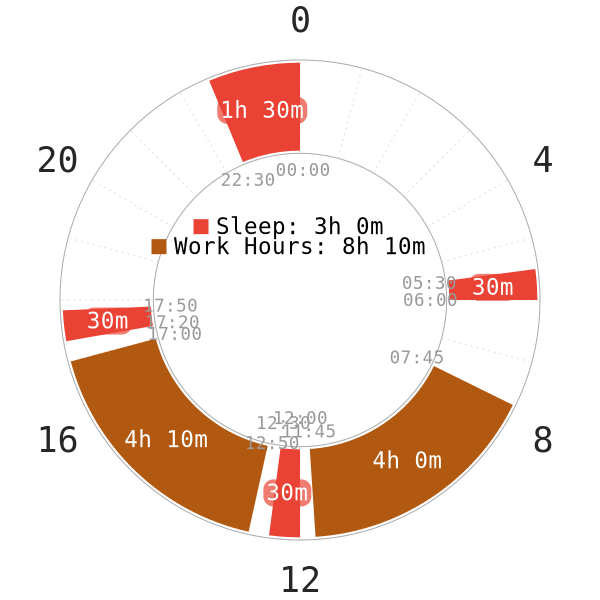
- E4 seems to have a seemingly excessive amount of naps to schedule each day and likely becomes a big hassle long term. With only 4 sleep blocks and the scheduling design, Trimaxion can fit into regular 9-to-5 mainstream occupations if napping at work is possible.
- The decently long wake periods between each sleep also allow for quite a bit of personal obligations and longer activities.
- A 30m nap can yield more wakefulness sustaining than a 20m nap. This also explains why the sleep frequency of Trimaxion is relatively low for a schedule with only 3h total sleep.
- As with any extreme polyphasic schedules, Trimaxion is a convincing candidate for extremely deep lucid dreaming instances.
- During emergency situations, a 30m nap can be more useful than a 20m nap. This can also reduce the number of sleep blocks later on for some time before one has to sleep again.
For normal sleepers, the unforgiving drawbacks of Trimaxion include, but not limited to:
- Inflexibility of sleep timing even after adaptation
- Inability to cope with extensive physical activities
- Fundamentally limited evening social time.
- Skipping any sleep on this schedule even after adaptation can also be very damaging to recover from, at least on paper.
It would take a lot of efforts to maintain the delicate balance of sleep stages on this schedule. Other than Dymaxion, it would be better to adapt to Bimaxion instead. There is still the Dymaxion-style structure of sleeps and the 30m naps to experiment with. Those who enjoy 30m naps can also attempt a “-maxion” schedule like Trimaxion under emergency.
Main author: GeneralNguyen
Page last updated: 8 April 2021
